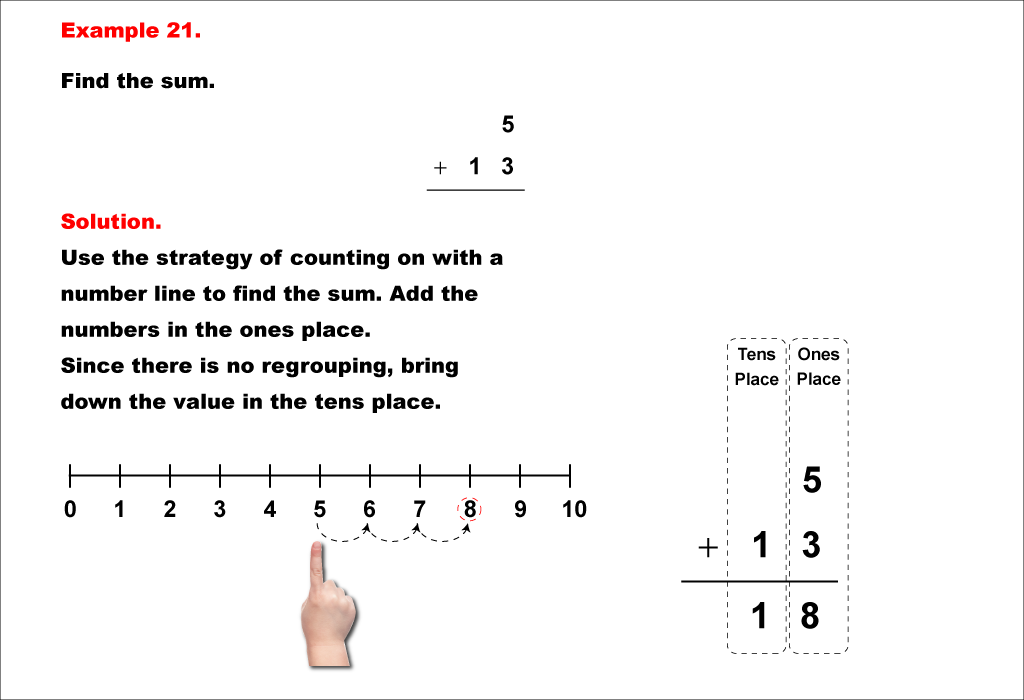
Display Title
Math Example--Arithmetic--Two-Digit Sums to 20 (No Regrouping)--Example 21
Display Title
Math Example--Arithmetic--Two-Digit Sums to 20 (No Regrouping)--Example 21

Topic
Addition
Description
Shows an addition example (5 + 13) using a number line. The image includes placeholders for "Tens Place" and "Ones Place," illustrating the addition without regrouping. Example 21: Find the sum of 5 + 13 using the strategy of counting on with a number line. Since there is no regrouping, bring down the tens place value. The answer is 18.
In general, addition is a fundamental arithmetic skill that helps students understand the concept of combining quantities. Through these examples, students can see how basic addition works with small numbers, building a strong foundation for more complex operations. By visualizing the steps, students can reinforce their understanding of number relationships.
Seeing multiple worked-out examples allows students to recognize patterns in addition. For instance, consistently seeing sums calculated on a number line or through other visual aids enables them to approach addition with confidence. Reinforcement through examples is essential for deep comprehension and retention of the concept.
Teacher’s Script: Today, we’re looking at an example of adding numbers. In this case, let’s focus on example 21: find the sum of 5 + 13 using the strategy of counting on with a number line. since there is no regrouping, bring down the tens place value. the answer is 18.. Notice how we carefully add the numbers step by step. Think about how each example builds on what we’ve learned before.
For a complete collection of math examples related to Addition click on this link: Math Examples: Adding Two-Digit Numbers Collection.
| Common Core Standards | CCSS.MATH.CONTENT.1.NBT.C.4 |
|---|---|
| Grade Range | K - 2 |
| Curriculum Nodes |
Arithmetic • Addition • Addition Facts to 25 |
| Copyright Year | 2021 |
| Keywords | sums to 20, place value, addition |